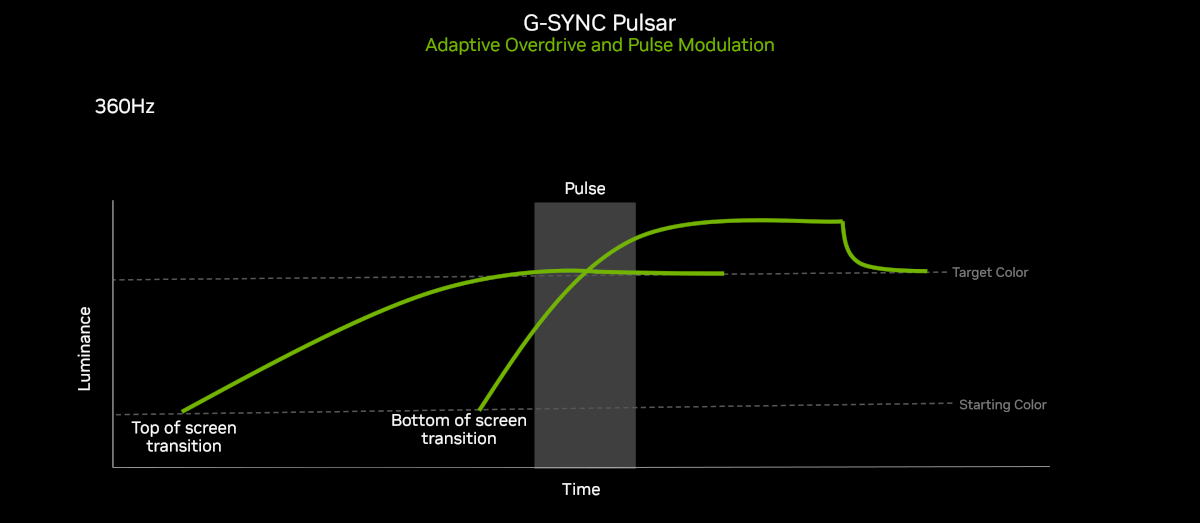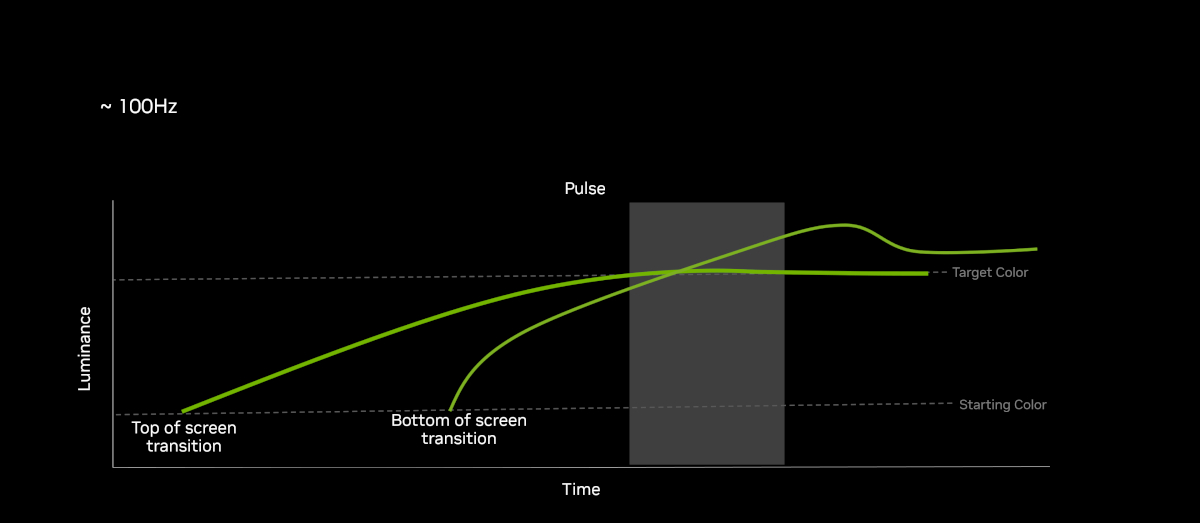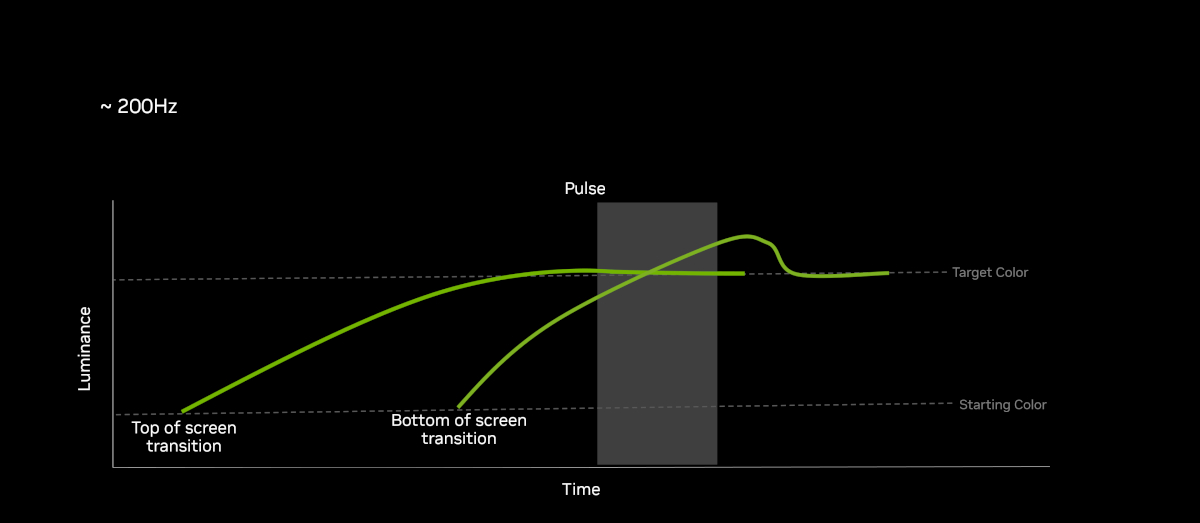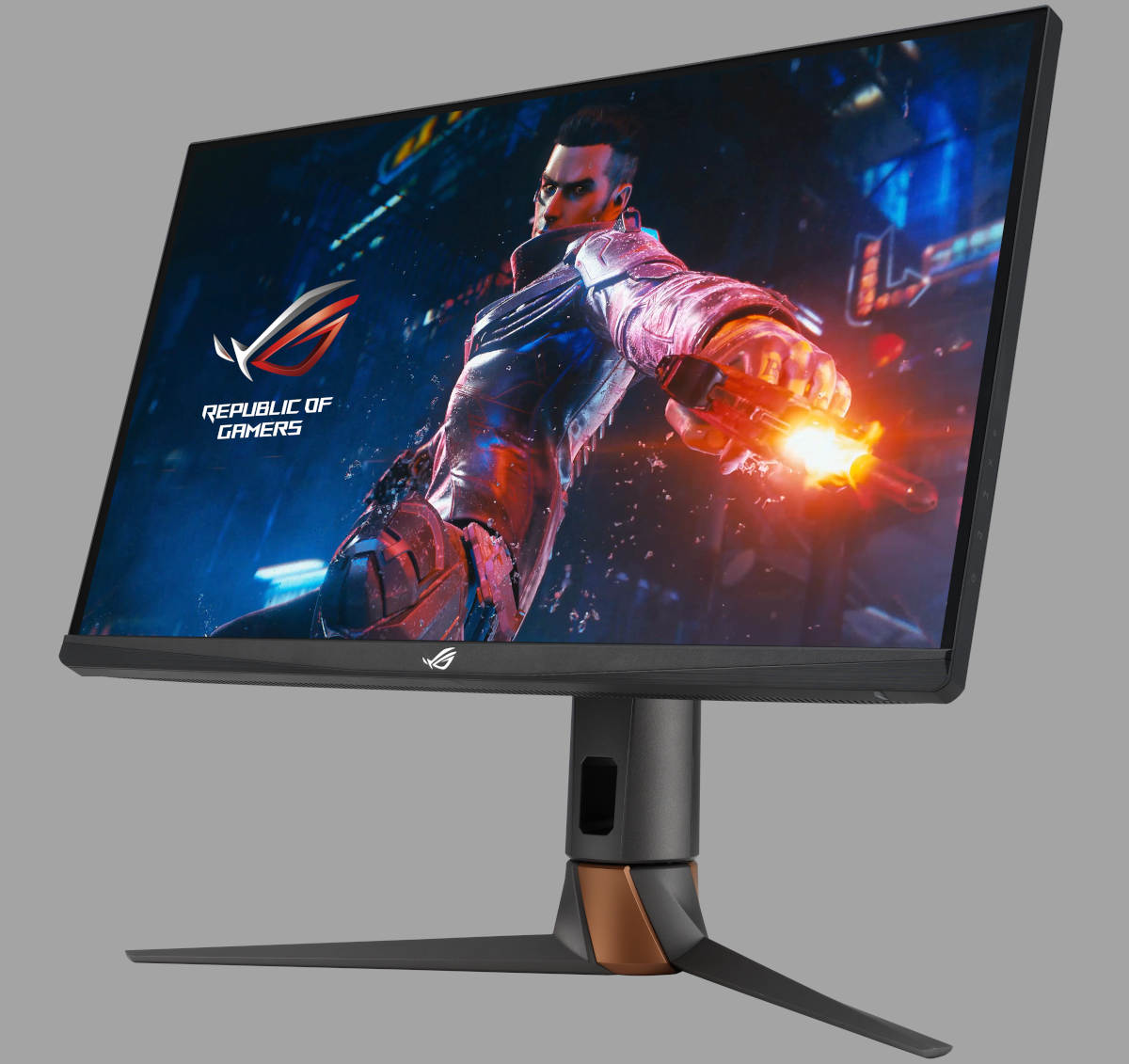Nvidia announced a good few innovations at CES 2024. One particular piece of tech that caught our eye is G-Sync Pulsar. It is being touted as the next evolution of Variable Refresh Rate (VRR) technology.
G-Sync Pulsar offers the same stutter-free benefits of its predecessor and goes beyond its capabilities by introducing variable frequency strobing. This new method aims to eliminate display motion blur and significantly improve visibility of content in motion.
How it works



Display motion blur is caused by slow LCD transitions. Slow pixel transitions can’t keep up with fast-moving objects and creates a weird smearing effect. This may not be that noticeable on IPS, modern Mini-LED, or QD-OLED panels. However, VA panels are notorious for this after-effect, and it can be a disadvantage especially for competitive gamers.
These slow transitions can be eliminated with Nvidia’s Variable Overdrive tech on G-Sync models and through backlight strobing, which is often found under your monitors’ OSD settings as ‘1ms motion blur reduction.’
However, backlight strobing at a frequency that is not fixed can cause serious flicker. Ergo, preventing effective use of the tech in VRR. From my experience, it also significantly dims your display, and it’s not worth the trade-off, even for competitive play.
G-Sync Pulsar essentially combines Adaptive Overdrive and Pulse Modulation to mitigate these effects. Adaptive Overdrive dynamically adjusts strobing patterns from one colour to another, effectively reducing motion blur and ghosting. Simultaneously, Pulse Modulation cleverly modulates overdrive based on both on screen location and refresh rate – ensuring visual clarity and fidelity no matter the in-game FPS or monitor frequency speeds. It’s the best of both worlds.

G-Sync Pulsar is currently being demoed at CES on an upcoming ASUS ROG Swift PG27 Series G-Sync gaming monitor. The tech boasts effective motion clarity at over 1,000Hz, which is absolutely bananas. You’re gonna need a bigger GPU to hit those numbers!
Sadly you’re also going to need a new G-Sync Ultimate monitor, and it doesn’t seem like the feature will be available on existing G-Sync-compatible displays. Specifically, look out for G-Sync Pulsar support as the tech is hardware-specific. This includes the Asus ROG Swift PG27 Series, which will arrive sometime later this year.

